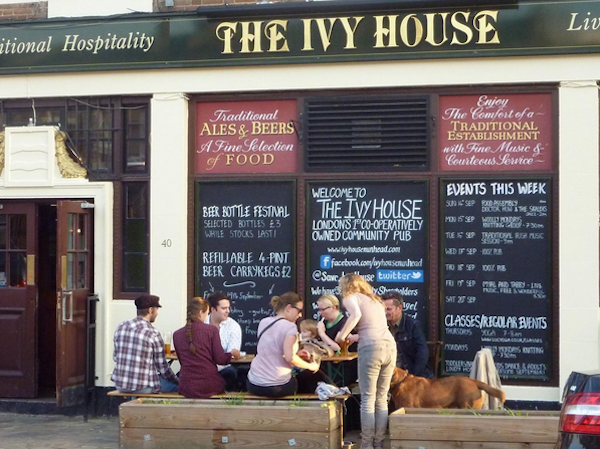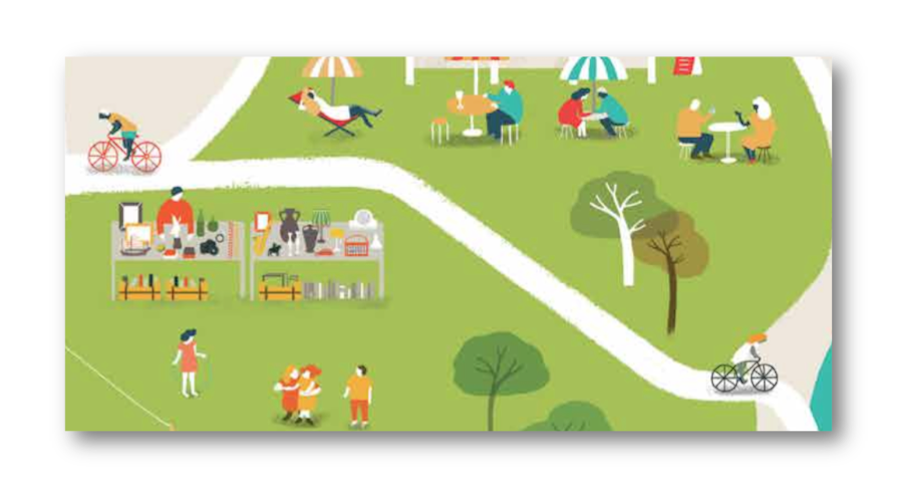As a professor, I spend my days asking what inspires people to take steps for change in local neighbourhoods (in the UK, where I live, and beyond). I also look at the impact of grassroots and DIY activity, like making, growing and sharing together. I’ve just completed Design for Sharing [pdf], a study about how people build sharing resources locally and what kind of environment supports it.
My work on ways to share was accompanied by the sudden growth of the sharing economy, but it was motivated by a desire to make life on the planet more sustainable. Sharing with others is one of the positive stories to tell in the face of a harsh future, but how we tell that story is paramount. Do we share to manage finite resources better, make our societies more workable, or support economic well-being? As a researcher working to understand design for sharing, it has become increasingly obvious to me that we will only achieve all three ambitions if all three is what we design for.
To deal with the changes ahead, we need strong communities and links between communities, as well as better resource management. We need access to resources across the whole of society and not just for people who already own what they need. And we need people to show entrepreneurship, imagination and resourcefulness. All these qualities are bred by creating the cultures in which they thrive. That’s where stories come in.

Models of a world 30 years from now where sharing has been banned (a) or encouraged as a community-led activity (b), made by participants at the launch of the report into Design for Sharing. In the hostile world, the group sets up an alternative area where people go to share.
Despite the fanfare around the collaborative economy, when our research looked at the structure of the sharing tools being developed there was little support for people with few resources and little promotion of collaborative values. To share in the money to be made with Airbnb or Uber, for instance, you need to own spare capacity to trade. To benefit from Taskrabbit, you need to be earning enough to pay your bills, not just a chance to join a new servant class with no union, contract or minimum wage. You know the kind of thing I am referring to here, because you have read about it here.
In fact, the stories of the sharing economy seemed to include very little actual sharing as I have grown up understanding it. Investigating this, my colleague Clodagh Miskelly and I produced Design for Sharing, to consider how finite resources, such as tools, produce, time and skills are being shared locally to strengthen neighbourhoods and networks. We describe the work of everyday designers building sharing opportunities in local communities and compare these to the big stories in the news.
In the report, seven change-makers in South London tell stories of communal initiatives from within. Between them, they helped set up a microlibrary, a community-asset pub, a community garden, a digital whip-round service, a communal workshop space, a time bank and a conservation society. Our study revealed the following seven tactics for success that can be shared, just as their good ideas for shared spaces can be the basis of further innovation:
- One small thing – doing something that doesn’t overstretch the capacity of the people involved
- Mobilisation – taking a broad cross-section of people with you as needs dictate
- Growing gains – giving the time it takes to build social systems around new resources
- Rootedness – aligning with the place and culture you are operating within
- Networks in the making – using existing networks to embed and form partnerships for delivery
- Scale and tempo – linking interests at an individual and small group level with the wider scope of the project
- Stepping into the weave – offering help to other organisations and so creating a culture of support

The Ivy House, the first pub to be listed as an Asset of Community Value and the first building in the UK to be bought for the community under the provisions of the Localism Act. (credit: Ann Light)
We learned that these locally-developed initiatives are different in tone, scale, ambition and practice to those getting attention in the sharing economy. In the local stories, we see an emphasis on organising together to create shared spaces for collaborative use of resources and joint ownership of projects and places, accompanying sensitivity to environmental issues. Whereas, we notice that many of the publicised business models feature significant elements of renting, leasing and hiring, and many services focus only on resource management, sometimes at the expense of community growth. In fact, some sharing economy narratives confuse resource management activities with social cohesion goals. This shows the attractiveness of the end state, but does little to create it.
Our research allowed us to conclude with three design strategies for sharing, each promoting a different aspect of sustainability:
- design for optimal resource management;
- design for improved societal relations;
- design for economic (global, national, local, communal) vitality.
We then considered the design of digital systems to foster each. Digital systems can be applied to help manage trust, access, connection, the breaking of social boundaries, and social inclusion, while preserving a sense of place. They can do so by providing collective solutions as well as the person-to-person brokering and vetting often seen in sharing economy tools.

Lewisham Micro Library, standing on a street corner in South London in an old telephone box, where passers-by take and leave books. (credit: Ann Light)
At the end of the report, we advocate policy that promotes design to support social cohesion and, with it, the model of local initiative-taking that makes places to live both pleasant and resilient. We do so particularly because social mechanisms need boosting in an economy where global corporate enterprises set the agenda for service provision.
But we also do so because, in the narratives we tell ourselves about life in the future, only those where we address issues of inclusion and access to resources in a fundamental way seem sufficient to mobilise the human elements of a world facing the extinction of a majority of life forms, destruction of key natural materials, and likely inundation.
How are designs and stories linked? We can only design what we imagine. Sharing exists at the heart of human culture, but if we design systems that redefine it as exploitative, we make it harder for people to work together. After all, the structures we use shape our exchanges profoundly: sending us messages about who we are, as well as affecting how we interact. They help form our stories about ourselves, which in turn means more technologies in that image. The more we believe that sharing is an individualised activity that belongs to resource-rich people, the more our designs for sharing will erode the fibre of what makes neighbourhoods resilient and supportive. Luckily, work on the ground is sending a more communal message.
To learn more, read the Design for Sharing report or see the Design for Sharing powerpoint presentation









